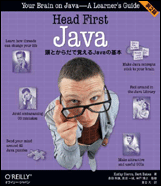2014年11月29日土曜日
2014年11月23日日曜日
The Perfect Wave
http://www.hup.harvard.edu/catalog.php?isbn=9780674725010
Heinrich Pes
Author:
http://www.physik.uni-dortmund.de/~paes/
![]()
Heinrich Pes
include many interesting stories related to neutrino.
good for scientists and students
Author:
http://www.physik.uni-dortmund.de/~paes/
2014年11月19日水曜日
2014年11月12日水曜日
Go Vietnam for Soken-dai
2014-11-13 -> 11-17
Hanoi and HCMC
http://www.jasso.go.jp/study_j/info_fair_vietnam_2014.html
に総研大として参加。
同行者:
田村理事
http://www.minpaku.ac.jp/aboutus/pe/tamura/index
三原教授 (KEK)
総研大の担当者3人。
通訳の大西さん。
訪問先:
![]()
Hanoi and HCMC
http://www.jasso.go.jp/study_j/info_fair_vietnam_2014.html
に総研大として参加。
同行者:
田村理事
http://www.minpaku.ac.jp/aboutus/pe/tamura/index
三原教授 (KEK)
総研大の担当者3人。
通訳の大西さん。
訪問先:
VNUHCM, University of Science
2014年11月6日木曜日
James Webb Space Telescope: The First Light Machine
ISAS
Space Science Seminar Date: 15:30-16:30, 6th of November (Thu), 2014 Place: Bldg-newA 2F Meeting room A Speaker: H. Philip Stahl (NASA/MSFC, USA) Title: James Webb Space Telescope: The First Light Machine Abstract: Scheduled to begin its 10 year mission after 2018, the James Webb Space Telescope (JWST) will search for the first luminous objects of the Universe to help answer fundamental questions about how the Universe came to look like it does today. At 6.5 meters in diameter, JWST will be the world’s largest space telescope. This talk reviews science objectives for JWST and how they drive the JWST architecture, e.g. aperture, wavelength range and operating temperature. Additionally, the talk provides an overview of the JWST primary mirror technology development and fabrication status.
2014年11月5日水曜日
The Power of Topology in Superstring Theory
ISAS
Space Science Colloquium Date: 16:30-17:30, 5th of November (Wed), 2014 Place: Conference room (Main building 2F) Speaker: Hiroshi Oguri (Caltech, USA) Title: The Power of Topology in Superstring Theory Abstract: Superstring theory is the leading candidate for the ultimate unified theory of all the matters and forces in nature. It postulates that fundamental building blocks are not point particles but strings, and it is defined in (9+1)-dimensional spacetime. The rich structure in particle physics in our (3+1) dimensions, such as quark and lepton flavors, gauge forces, and the Higgs boson to break the gauge symmetry, is expected to emerge from the geometry of the extra 6 (= 9 - 3) dimensions, called a Calabi-Yau space. We want to derive quantitative predictions on our universe from the geometry of the Calabi-Yau space. However, the Calabi-Yau space is so complicated that we do not even know an expression for its metric, namely how to measure the distance between two points on the space. Given this limitation, what can we do? In this talk, I will describe techniques we have developed to overcome this difficulty and applications of these techniques to problems in physics and mathematics.
ラベル:
caltech,
ipmu,
isas-rigaku-seminar,
math,
Ooguri
2014年11月4日火曜日
Exploring the Dark Sector with Euclid and WFIRST-AFTA
ISAS
Space Science Colloquium Date: 16:30-17:30, 4th of November (Tue), 2014 Place: Conference room (Main building 2F) Speaker: Jason Rhodes (NASA/JPL, USA) Title: Exploring the Dark Sector with Euclid and WFIRST-AFTA Abstract: Dark energy, the name given to the cause of the accelerating expansion of the Universe, is one of the most profound mysteries in modern science. Current cosmological models hold that dark energy is currently the dominant component of the Universe, but the exact nature of dark energy remains poorly understood. There are ambitious ground-based surveys underway that seek to understand dark energy and NASA is participating in the development of significantly more ambitious space-based surveys planned for the next decade. NASA is providing mission-enabling technology to the European Space Agency‘s (ESA)
Euclid mission in exchange for US scientists to participate in the Euclid mission. NASA is also developing the Wide Field Infrared Survey Telescope-Astrophysics Focused Telescope Asset (WFIRST-AFTA) mission for possible launch in ~2023. WFIRST was the highest ranked space mission in the Astro2010 Decadal Survey and the AFTA incarnation of the WFIRST design uses a 2.4m space telescope to go beyond what the Decadal Survey envisioned for WFIRST. Understanding dark energy is one of the primary science goals of WFIRST-AFTA. I’ll discuss the status of Euclid and WFIRST and comment on the complementarity of the two missions. I’ll also briefly discuss other, exciting science goals for WFIRST, including a search for exoplanets using both microlensing and a dedicated coronagraph for exoplanet imaging.
ラベル:
cosmology,
dark-energy,
Euclid,
isas-rigaku-seminar,
nasa,
WFIRST
2014年11月3日月曜日
宇宙学校・とうきょう 2014-11-03
http://www.isas.jaxa.jp/j/topics/event/2014/1103_tokyo.shtml
(2015-01-22)
講師として参加しました。
「宇宙の見えないもの」、
暗黒物質や暗黒エネルギーについて説明しました。
ラベル:
ASTRO-H,
outreach,
takayuki-tamura
登録:
投稿 (Atom)



